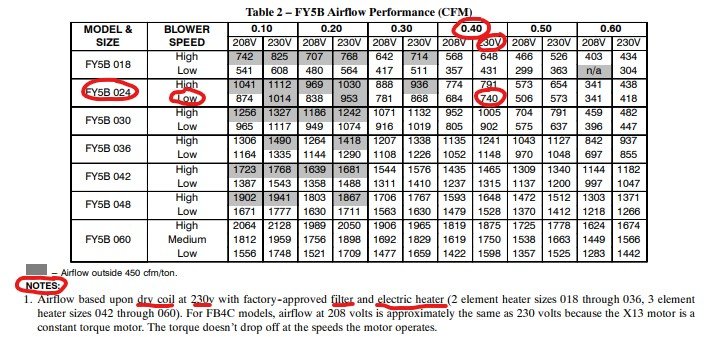Get Tech Tips
Subscribe to free tech tips.
Be Careful When Jumping Out a Blower
A tech diagnoses a failed blower relay or board. They leave the blower jumped out by putting a terminal multiplier on the common terminal of the relay/board and connecting the fan speed tap right to power.
There can be an issue with that.
Some electric heat fan coils have a heat/blower interlock where the heat relay/sequencer backfeeds and brings on the blower across normally closed (NC) contacts. The purpose of that is to ensure the blower comes on with a heat call without the need for a G call.
In some cases when you put in a terminal multiplier and apply constant power to the blower, the G call sends that constant power back to the heat strips and brings them on.
That's not good. You end up with high power bills, melted wires, fire, death, and stale doughnuts.
So, if you are leaving a blower jumpered out to run constantly, I advise keeping it separate from the board completely.
Coincidentally, the photo at the top is a setup that will not backfeed. That's because it uses two isolated circuits on the heat sequencer for fan and heat. So, the photo I chose wasn't the best. Cut me some slack; the blower assembly was sitting right behind my office.
Here is a video on what I'm talking about:
— Bryan











Comments
Trane/American Standard uses the “interlocks”…
Now that is one thing i like about Goodman/Amana is that they just run a simple 120v leg from the contactor on the strips to the NC side of the fan board. This way 24V White/Emergency Heat can be engaged without any interlocking at all. Much simpler and better way to do things.
I always just jump red to green, if no fan i know my board is bad.
Trane/American Standard uses the “interlocks”…
Now that is one thing i like about Goodman/Amana is that they just run a simple 120v leg from the contactor on the strips to the NC side of the fan board. This way 24V White/Emergency Heat can be engaged without any interlocking at all. Much simpler and better way to do things.
I always just jump red to green, if no fan i know my board is bad.
trouver un mГ©dicament en pharmacie: Pharmacie en ligne France – pharmacie en ligne france livraison belgique pharmafst.com
trouver un mГ©dicament en pharmacie: Pharmacie en ligne France – pharmacie en ligne france livraison belgique pharmafst.com
pharmacie en ligne sans ordonnance trouver un mГ©dicament en pharmacie or pharmacie en ligne france livraison belgique
https://clients1.google.gp/url?q=http://pharmafst.com п»їpharmacie en ligne france
[url=https://www.oaklandsprimarybromley.co.uk/bromley/primary/oaklands/CookiePolicy.action?backto=https://pharmafst.com]pharmacie en ligne[/url] Pharmacie en ligne livraison Europe and [url=http://foru1f40m.bunbun000.com/bbs/home.php?mod=space&uid=9580445]trouver un mГ©dicament en pharmacie[/url] Pharmacie sans ordonnance
pharmacie en ligne sans ordonnance trouver un mГ©dicament en pharmacie or pharmacie en ligne france livraison belgique
https://clients1.google.gp/url?q=http://pharmafst.com п»їpharmacie en ligne france
[url=https://www.oaklandsprimarybromley.co.uk/bromley/primary/oaklands/CookiePolicy.action?backto=https://pharmafst.com]pharmacie en ligne[/url] Pharmacie en ligne livraison Europe and [url=http://foru1f40m.bunbun000.com/bbs/home.php?mod=space&uid=9580445]trouver un mГ©dicament en pharmacie[/url] Pharmacie sans ordonnance
https://tadalmed.com/# Tadalafil achat en ligne
https://tadalmed.com/# Tadalafil achat en ligne
Achat mГ©dicament en ligne fiable: Livraison rapide – Pharmacie en ligne livraison Europe pharmafst.com
Achat mГ©dicament en ligne fiable: Livraison rapide – Pharmacie en ligne livraison Europe pharmafst.com
Acheter Kamagra site fiable: kamagra oral jelly – kamagra pas cher
Acheter Kamagra site fiable: kamagra oral jelly – kamagra pas cher
Cialis sans ordonnance pas cher: Pharmacie en ligne Cialis sans ordonnance – Tadalafil achat en ligne tadalmed.shop
Cialis sans ordonnance pas cher: Pharmacie en ligne Cialis sans ordonnance – Tadalafil achat en ligne tadalmed.shop
Kamagra Oral Jelly pas cher [url=https://kamagraprix.com/#]kamagra 100mg prix[/url] achat kamagra
Kamagra Oral Jelly pas cher [url=https://kamagraprix.com/#]kamagra 100mg prix[/url] achat kamagra
https://kamagraprix.com/# achat kamagra
https://kamagraprix.com/# achat kamagra
olympe: olympe – olympe casino en ligne
olympe: olympe – olympe casino en ligne
To leave a comment, you need to log in.
Log In